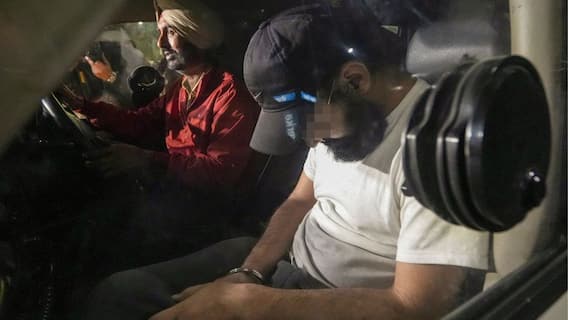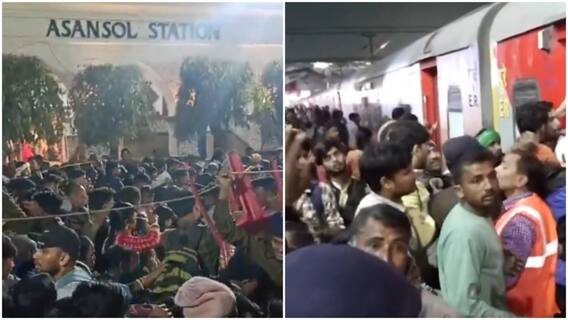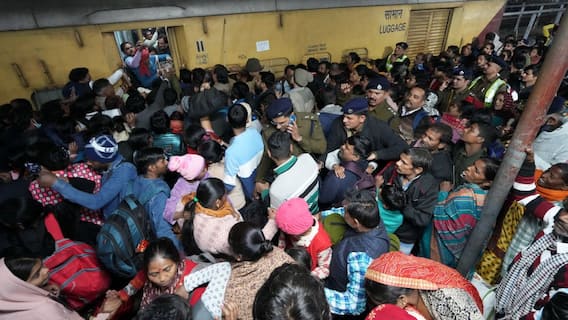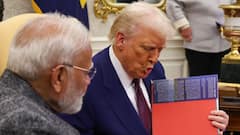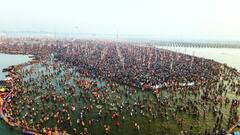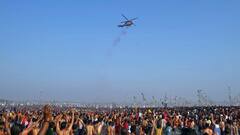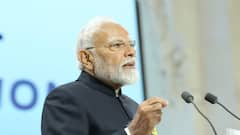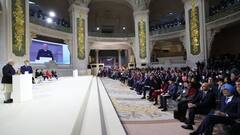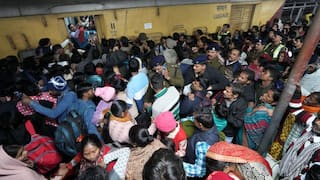Explorer
Post Diwali, Air Quality In Delhi-NCR Reaches ‘Very Poor’ Category
The Air Quality in Ghaziabad was recorded at 699 at 7:30 am on Monday. As Haryana too witnessed bursting of crackers on Diwali, its AQI stood at 279 (poor) at NISE Gwal Pahari area in Gurugram.

Image: AP
New Delhi: Post Diwali night, the pollution levels in Delhi and Uttar Pradesh’s Noida plummeted to very poor category, with the overall air quality index at 306 and 356 respectively.
The dip in air quality in NCR this time is said to break all the previous records, as people reported violation of the two-hour window in Malviya Nagar, Lajpat Nagar, Kailash Hills, Burari, Jangpura, Shahdara, Laxmi Nagar, Mayur Vihar, Sarita Vihar, Hari Ngar, New Friends Colony, Dwarka among others places.
The Air Quality in Ghaziabad was recorded at 699 at 7:30 am on Monday. As Haryana too witnessed bursting of crackers on Diwali, its AQI stood at 279 (poor) at NISE Gwal Pahari area in Gurugram.
In Delhi, the air quality index (AQI) was 763, the highest, at the National Malaria Institute in Dwarka (West Delhi); 407 at the ITI Jahangirpuri (North Delhi), 313 at Shrinivaspuri (South Delhi).
At 11 pm on Sunday, Delhi's overall air quality index stood at 327, according to government agencies. On Saturday, AQI stood at 302.
In Wazirpur and Bawana, PM 2.5 levels crossed the 400 mark.
The AQI in the satellite towns of Faridabad, Ghaziabad, Greater Noida and Noida was 320, 382, 312 and 344, respectively, at 11 pm.
An AQI between 0-50 is considered "good", 51-100 "satisfactory", 101-200 "moderate", 201-300 "poor", 301-400 "very poor", and 401-500 "severe". Above 500 is "severe-plus emergency" category.
With an aim to curb the menace of dust and firecracker pollution, the East Delhi Municipal Corporation (EDMC) on Monday began sprinkling water on the roads in Laxmi Nagar area.
The local authorities were seen running the machines in and around Laxmi Nagar, which is a popular shopping area in the national capital.
Residents in Noida, Gurgaon and Ghaziabad also reported extensive fireworks much beyond the timeframe.
The people could also be seen bursting crackers before 8 PM, however, the intensity remained low.
The levels of PM10 - tiny particulate matter of diameter 10 or less than 10 microns that can enter deep into the lungs - reached as high as 515 micrograms per cubic metre in Anand Vihar during the day.
Twenty-five of the 37 air quality monitoring stations in the capital recorded their AQI in "very poor" category or beyond.
After last year's Diwali, Delhi's AQI had crossed the 600-mark, which is 12 times the safe limit. In 2017, the AQI post-Diwali was 367.
With Delhi's air quality plummeting to dangerous levels around Diwali every year, the Supreme Court in 2018 banned polluting firecrackers and ordered that only green firecrackers, which is said to cause 30 per cent less pollution, can be manufactured and sold.
But the green pyrotechnics have failed to draw good response both from sellers and buyers, primarily due to lack of variety, limited stock and high prices.
Last year also, people continued to buy the conventional firecrackers and use them.
Follow Breaking News on ABP Live for more latest stories and trending topics. Watch breaking news and top headlines online on ABP News LIVE TV
View More
Advertisement
Trending News
Advertisement
Advertisement
Top Headlines
India
Delhi NCR
Cities
Cities
Advertisement


Prosenjit NathThe writer is a technocrat, political analyst, and author.
Opinion








